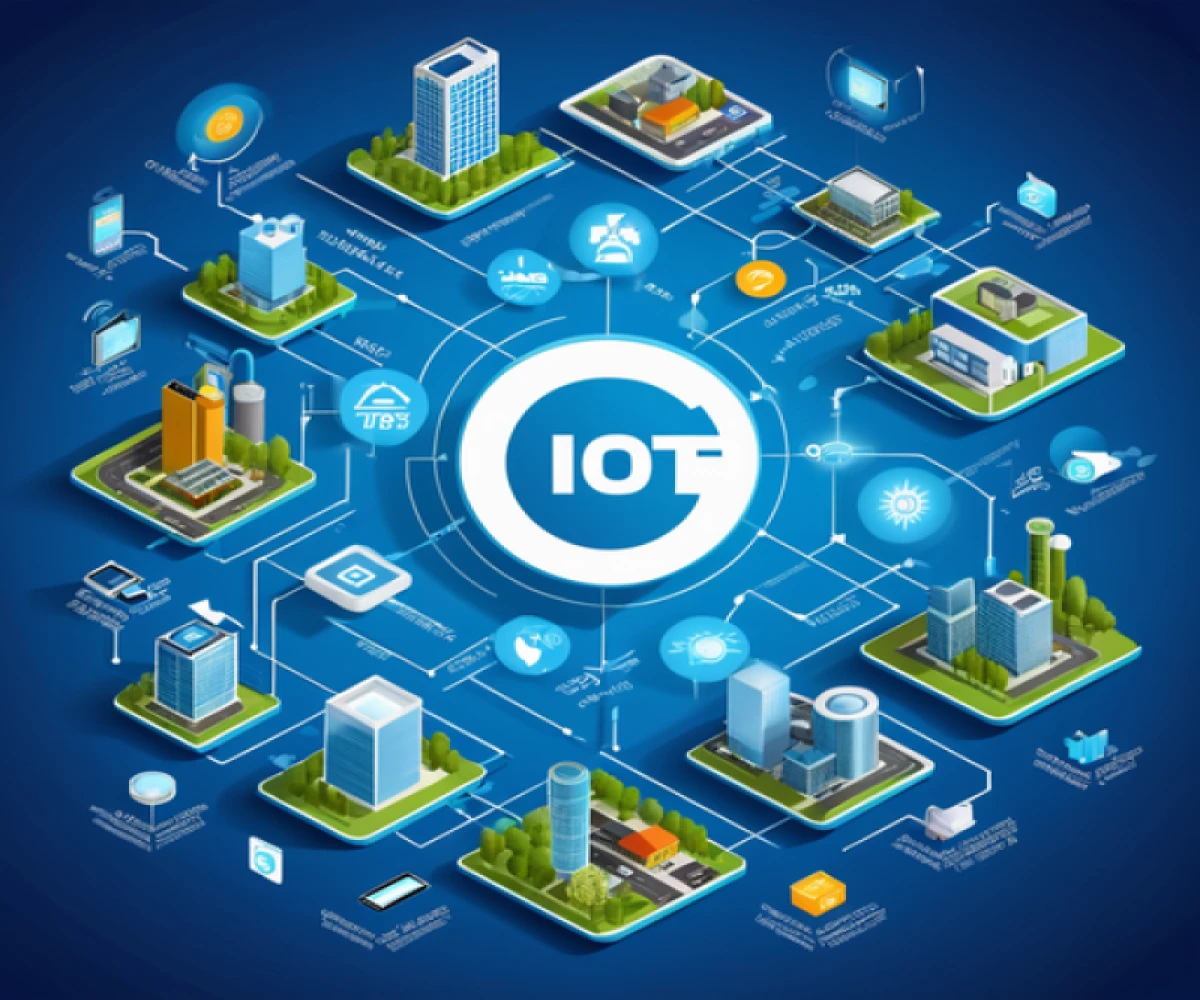
Top 12 IoT applications and examples in business
The Top 12 IoT Applications Transforming Businesses in 2024
The Internet of Things (IoT) is no longer a futuristic fantasy; it's woven into the fabric of modern business. By connecting everyday devices to the internet, businesses are unlocking a treasure trove of data and automation possibilities, leading to increased efficiency, cost savings, and even entirely new revenue streams.
But with a vast array of potential applications, where do you start? Here are the top 12 IoT applications currently revolutionizing various industries:
1. Smart Factories: Imagine sensors monitoring machines, predicting maintenance needs, and optimizing production lines in real-time. This is the reality of smart factories, boosting productivity and minimizing downtime.
Example: GE Aviation uses IoT sensors to monitor jet engine performance, enabling predictive maintenance and preventing costly in-flight issues.
2. Precision Agriculture: Farmers are leveraging IoT sensors to track soil moisture, temperature, and nutrient levels, allowing for targeted irrigation, fertilization, and pest control, maximizing yields and minimizing waste.
Example: Granja Esmeralda in Brazil uses connected sensors and drones to optimize water usage in coffee plantations, reducing consumption by 40%.
3. Connected Supply Chains: Real-time tracking of goods through the supply chain using GPS and RFID tags improves logistics efficiency, reduces inventory costs, and enhances transparency for businesses and customers.
Example: Maersk, a leading shipping company, uses IoT sensors to track containers, providing real-time location data and optimizing delivery routes.
4. Remote Patient Monitoring: Wearable devices and connected medical equipment allow healthcare providers to monitor patients remotely, enabling early intervention, improved chronic disease management, and reduced hospital readmission rates.
Example: AliveCor's KardiaMobile device allows patients to record EKG readings at home, sharing them with doctors for remote diagnosis and monitoring.
5. Smart Cities: From intelligent traffic management and waste collection to connected lighting and environmental monitoring, IoT is making cities more efficient, sustainable, and livable.
Example: Singapore's smart city initiatives include sensors to optimize traffic flow, reduce energy consumption, and improve waste management.
6. Predictive Maintenance: Businesses across industries are using IoT sensors to monitor equipment performance, predict potential failures, and schedule maintenance proactively, minimizing downtime and maintenance costs.
Example: Airlines are using engine sensors to predict maintenance needs, reducing aircraft downtime and ensuring safety.
7. Personalized Retail: Beacons and RFID tags in stores track customer behavior, enabling targeted promotions, personalized recommendations, and optimized store layouts for improved customer experience and sales.
Example: Amazon Go stores use sensor technology to allow customers to grab and go without checkout lines, offering a seamless shopping experience.
8. Connected Buildings: Smart thermostats, lighting systems, and security solutions optimize energy consumption, improve occupant comfort, and enhance building security through remote monitoring and control.
Example: Google's Dublin office uses a connected building system that learns occupant behavior to automatically adjust lighting and temperature, reducing energy consumption by 30%.
9. Connected Cars: Telematics data from connected vehicles provides insights into driving behavior, enables real-time traffic updates, and facilitates usage-based insurance models.
Example: Tesla vehicles collect data on driving patterns and road conditions, contributing to continuous software updates and improving autopilot features.
10. Smart Waste Management: Connected sensors on bins indicate fill levels, optimizing collection routes and reducing fuel consumption. Additionally, smart compaction technology maximizes bin capacity and minimizes waste collection frequency.
Example: Copenhagen uses smart waste management systems, reducing collection frequency by 70% and saving millions annually.
11. Industrial Automation: Robots and machines equipped with sensors and AI capabilities automate tasks, improve production efficiency, and reduce reliance on manual labor.
Example: Foxconn, a major electronics manufacturer, uses robots equipped with vision systems for automated assembly tasks, increasing production speed and accuracy.
12. Smart Grids: Sensors and communication technologies enable two-way communication between utilities and consumers, facilitating dynamic pricing, demand response management, and grid optimization.
Example: California's smart grid initiative allows consumers to adjust energy usage based on real-time prices, promoting efficient energy consumption and grid stability.
These are just a glimpse into the vast potential of IoT applications in business. As technology continues to evolve, even more innovative applications are sure to emerge, transforming industries and reshaping the way we work and live. So, are you ready to embrace the power of the connected world?
Remember: This is just a starting point. Conduct further research based on your specific industry and interests to discover the most relevant IoT applications for your business.


